












Honda HR-V Review

We had a few tries to guess what HR-V means, but we would've never figured out it stands for Hi-rider Revolutionary Vehicle.
The 'hi-rider' part is pretty self-evident from the HR-V's SUV styling, but is it revolutionary? Join us and find out as we get to know this compact Honda.
- Great practicality
- Feels like a premium car
- Easy to drive
- Hybrid setup is underwhelming
- Uninspiring handling
- A bit pricey
Should I buy a Honda HR-V?
Without knocking the HR-V, the latest version isn't especially revolutionary. The original 1999 HR-V might've earned that status but the current model sits in a crowded segment next to cars like the Toyota C-HR, Nissan Juke, Mazda CX-30 and Volkswagen T-Roc – to name just a few. Competition among these small family SUVs is fierce, so the Honda needs to impress if it's going to steal buyers away from those other cars.
"Honda's made sure that the spots you touch or rest your arms are trimmed in leather or soft-touch surfaces, and there's a sense of solidity to everything you touch"
The HR-V gets off to a good start. Its side profile is made up of clear horizontal lines across the roof, the windowline and the underside of the door. This makes the HR-V look visually longer and lower than its 4,340mm length and 1,582mm height suggests, giving it a more elegant form than many of its rivals with over-exaggerated curves. Beady headlights at the front flank a modern vent-like grille while, at the back, you'll find the brakelights connected by an oh-so-contemporary light bar.
Step inside and you'll be impressed with the sense of quality. There's soft-touch materials running the width of the dashboard and across the door panels, plus leather on the steering wheel and gear selector. Build quality feels excellent but it's a shame that Honda's chosen such a dark colour scheme for Elegance and Advance models. Step up to Advance Style trim and you get flashes of cream on the upholstery and trim pieces that really elevates these models above entry-level versions.
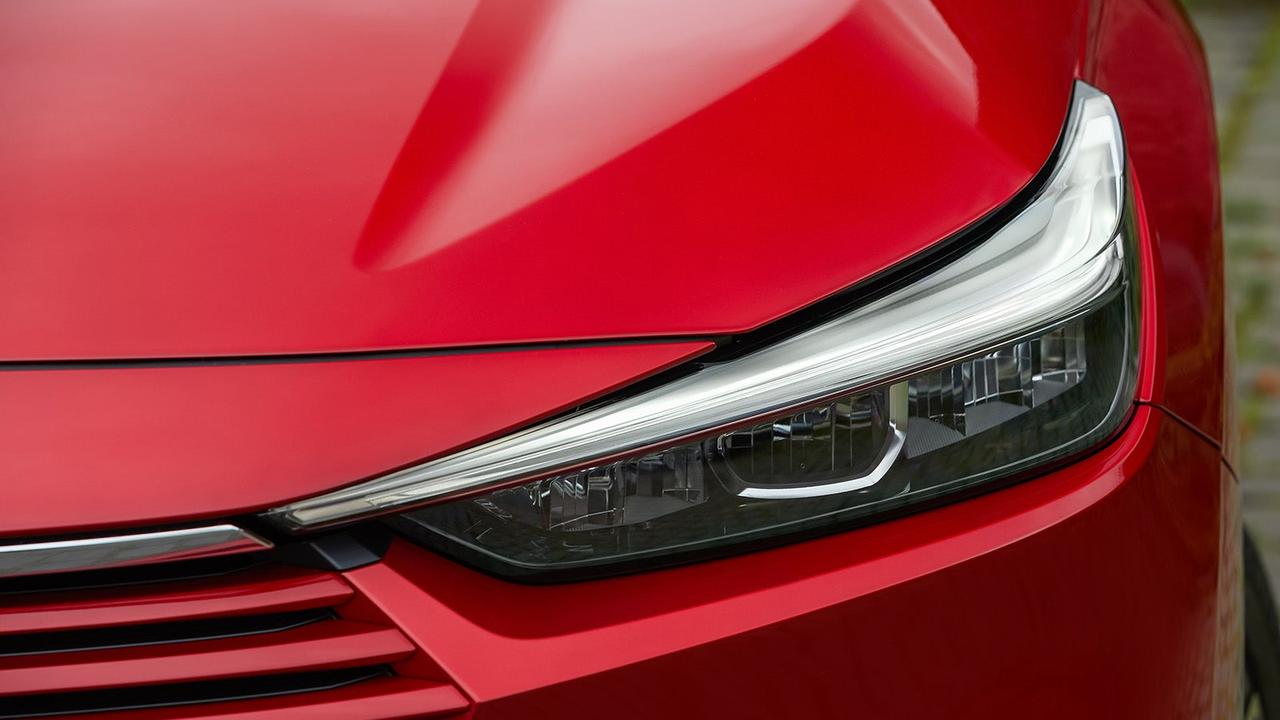
Honda hasn't leaned as hard into its touchscreen tech as rivals like BMW or Peugeot. As a result, you still have physical dials and buttons for everyday adjustments like the climate control and stereo volume, so it's very easy to acclimatise if you're new to the HR-V. The downside is that the screen itself feels a bit old-fashioned with a small display and dated graphics. Apple CarPlay and Android Auto connectivity are available, however, so most drivers can simply bypass this and use their preferred navigation and entertainment apps.
There's just one engine – a 131hp 1.5-litre self-charging hybrid. This is a great choice for most buyers as you won't have to faff around trying to recharge the car, and you'll still see excellent economy across mixed motoring. Performance is sensible rather than scintillating but its been tuned to make everyday driving easy, with predictable pedal responses and decent off-the-line reactions.
Prices are a little higher than most key rivals, whether you're shopping the HR-V as a new or a used car. While that does raise the barrier for entry, the HR-V should hold on to a good chunk of its value by the time you come to sell it, so you shouldn't lose lots of cash to depreciation. It helps, too, that Honda's earned a strong reputation for building durable cars, so you should expect years of reliable service from an HR-V with just regular maintenance.
Interior and technology
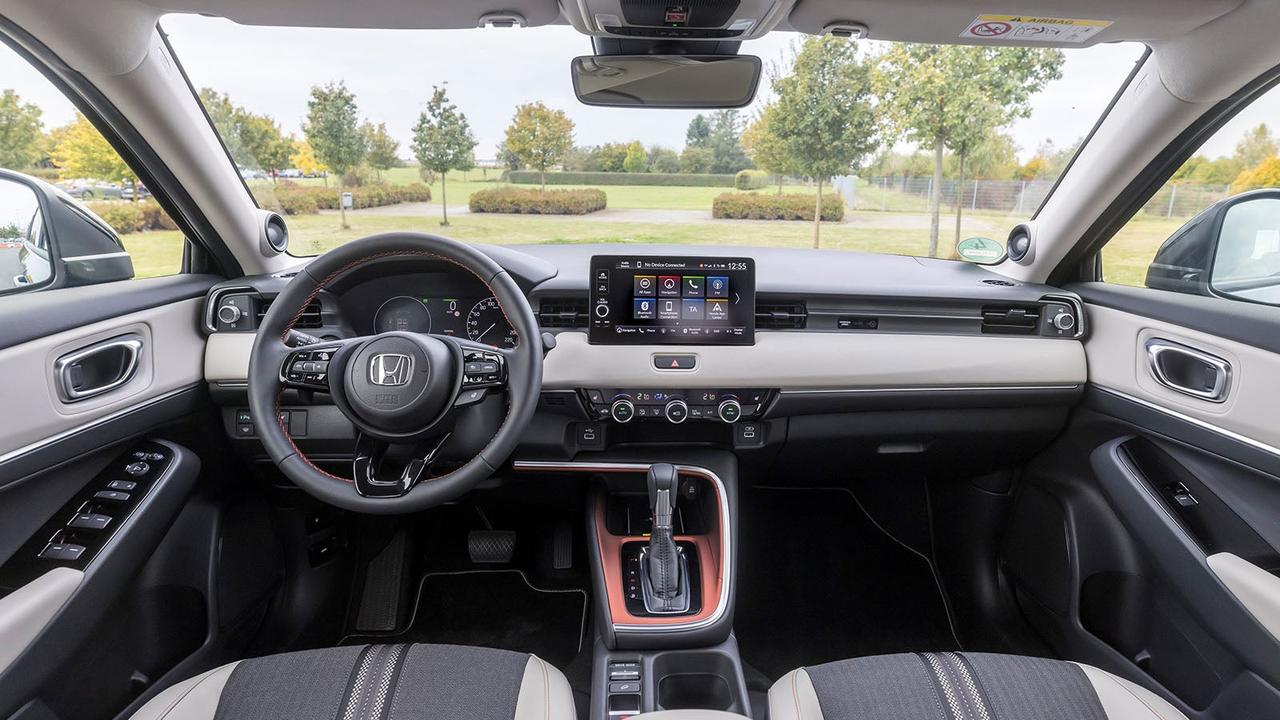
Current interior trends have seen many brands ditch dashboard buttons and pack as many features as possible into the infotainment system. This achieves the modern, minimalist aesthetic designers are looking for but makes most of these cars harder to use on the move. Thankfully, Honda hasn't fallen for the fad so you'll still find proper controls for key functions like climate and stereo adjustments. As a result, you'll rarely find yourself scanning the HR-V's dashboard hunting for the feature you want.
Material and build quality is generally great. Honda's made sure that the spots you touch or rest your arms are trimmed in leather or soft-touch surfaces, and there's a sense of solidity to everything you touch – no creaks or rattles from ill-fitting trim pieces. Our Advance Style test car had posh-looking cream upholstery and dashboard trim that put us in mind of a budget Range Rover Evoque. A quick glance in a lower-spec Elegance or Advance model reminds us that these versions are trimmed in black-on-black-on-black, making them feel a bit gloomier.
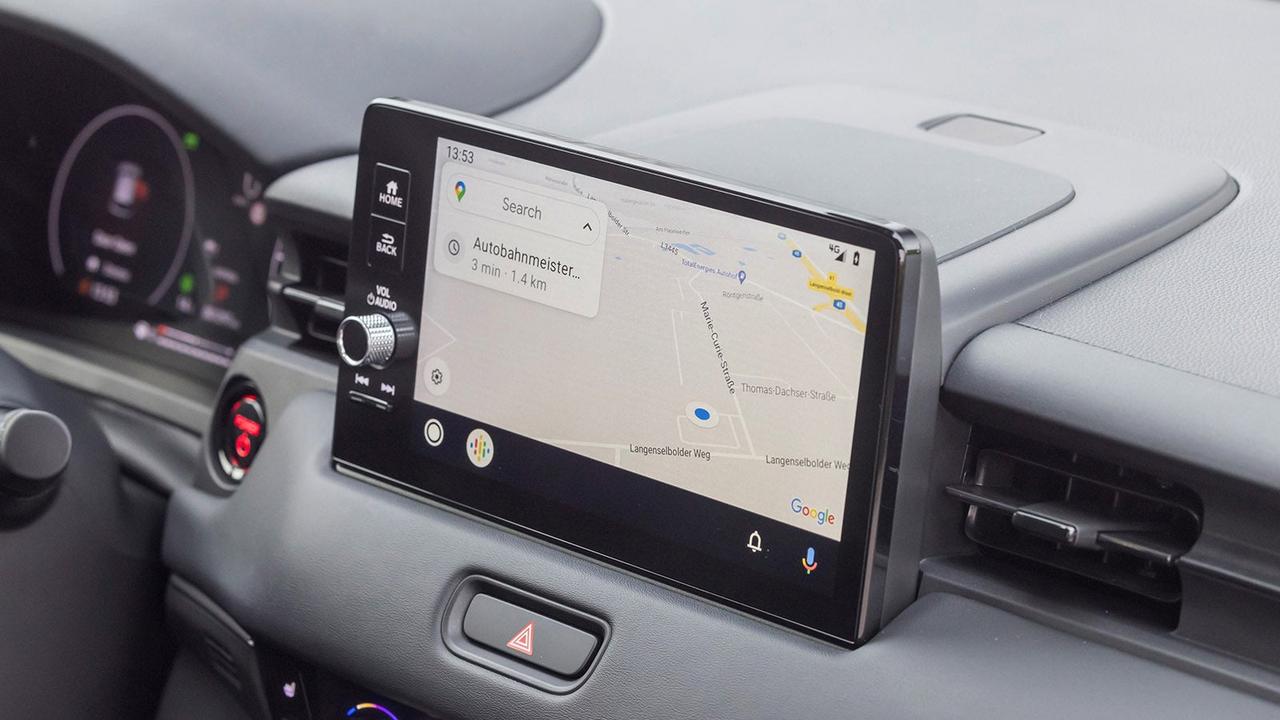
The infotainment system isn't some IMAX-screen that stretches across most of your eyeline. Instead, Honda's fitted a fairly restrained nine-inch iPad-style touchscreen to the middle of the dash. The unit has a sheen-like finish that minimises glare and reflections, but the actual on-screen graphics look decidedly old fashioned and the menu layout is a bit cluttered as there's not much screen space available for the many virtual buttons. On the plus side, there are physical home and back shortcut buttons, plus a proper volume knob and persistent on-screen shortcuts to jump between functions – all of which make quick adjustments easier.
The driver's dials are fully digital like so many of the HR-V's rivals, but the layout isn't as glitzy as some flashier rivals. Its standard layout features two traditional dials – one a hybrid power meter in place of a rev counter and the other a traditional speedo. We found it generally easy to look at this setup and spot the information we wanted quickly – this can be challenging in some more graphically intensive rivals – but there's a distinct lack of customisability to the Honda's setup that more tech-savvy users might miss.
Practicality

Size-wise, the HR-V is within a few millimetres of the Toyota C-HR – an odd middle point that's larger than the Nissan Juke and Volkswagen T-Roc, but shorter than cars in the class above like the Nissan Qashqai and Volkswagen Tiguan. Visibility is good and all cars include parking sensors at both ends plus a reversing camera as standard to make manoeuvring easy.
Passenger space is really strong. There's a wide range of adjustment for front-seat occupants to get comfy, and very tall drivers should find their seat slides far back enough. Even with the front seat all the way back, an average-height adult will be able to sit behind them without their knees grazing the seat in front – meaning the HR-V has one of the most spacious back seats in the class. Rear headroom is still generous but closer to the class average. The rear doors are longer than average to allow access to the deeply set rear seats, which puts them at a touch more risk of parking dings if they're flung open carelessly.
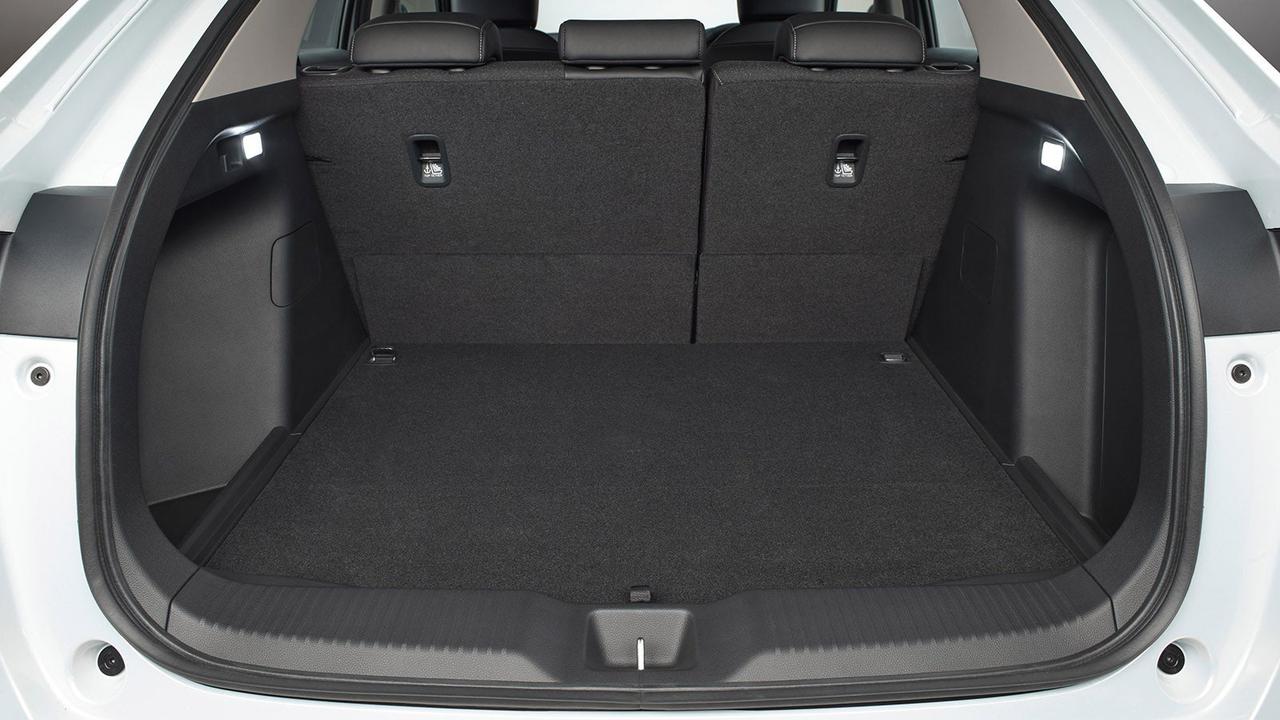
Pushing the back seats so far back in the body has impacted the HR-V's boot space, with just 335 litres on offer. There's enough space for a small pushchair or a medium-sized weekly shop, but most rivals are larger than the Honda – even cars like the Toyota Yaris Cross from the class below. The actual width and length are reasonably good, but the HR-V's hybrid battery eats into underfloor space, with just a small tray accessible if you lift up the boot floor.
The HR-V has a trick up its sleeve, however, in the form of its appropriately named Magic Seats. These allow you to easily flip the rear-seat bases up so they're folded against the headrest, leaving a simply enormous space where the seat once was. It's much less hassle than folding the seat backs down and dramatically increases the flexibility of the HR-V's load area, more than making up for the mediocre boot space.
And when you need extra space than the boot offers, the seat bases slide forwards when you fold the seat backs down – giving you a completely flat floor.
Engines and performance
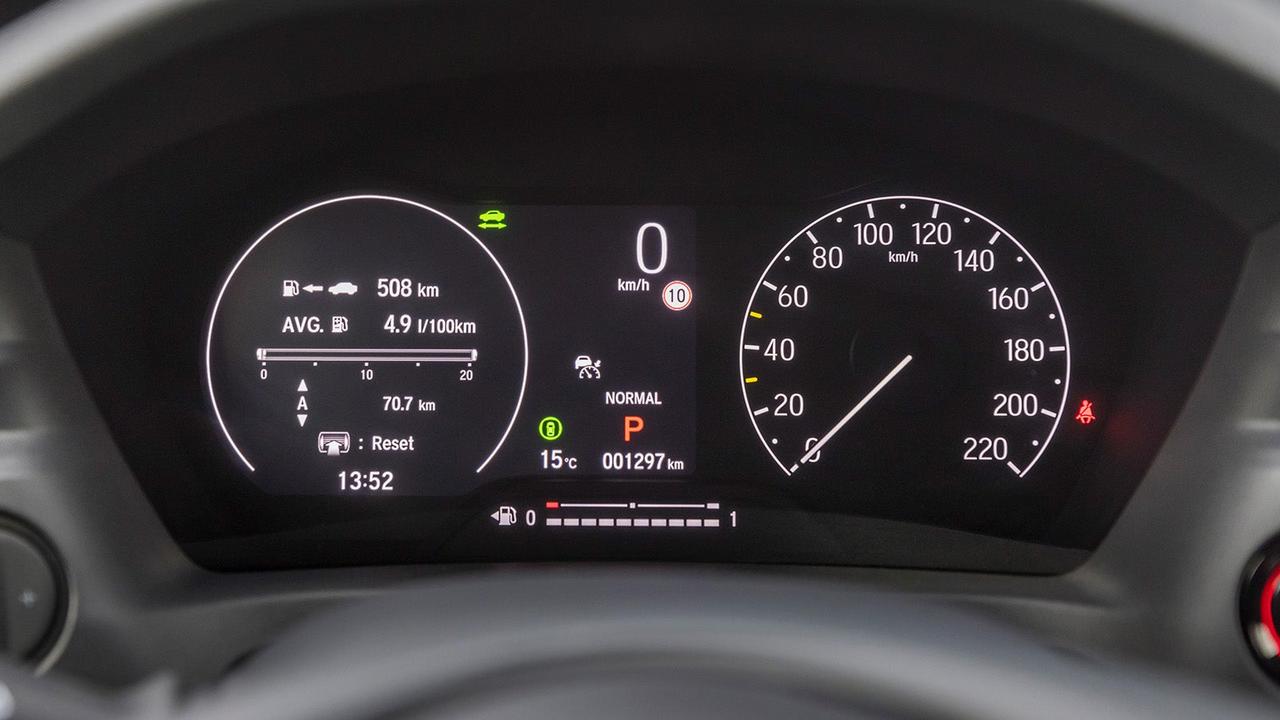
There's just one engine in the HR-V – a 1.5-litre self-charging hybrid that's similar to the setup used in the Honda Jazz. To cope with the SUV's extra mass, the system's been boosted from 109hp in the Jazz to 131hp in the HR-V. That's still a fairly pedestrian figure in this class and the car's 10.6-second 0-62mph time isn't particularly remarkable.
Hybrids like the HR-V tend to perform better is in everyday driving, where their electric motors give them quick off-the-line acceleration, and they can turn their engines off when not needed to save fuel. That's exactly the praise we've heaped at the 2.0-litre hybrids in Honda's Civic and ZR-V models, but we didn't quite fall for the 1.5-litre setup in the HR-V. It pulls away cleanly like most hybrids but feels a little sluggish as you lean harder on the accelerator, which means you often end up pressing it hard enough to coax the petrol engine into life to assist the electric motor, and you're rewarded by a hard-edged roar as the engine spins up to make power.
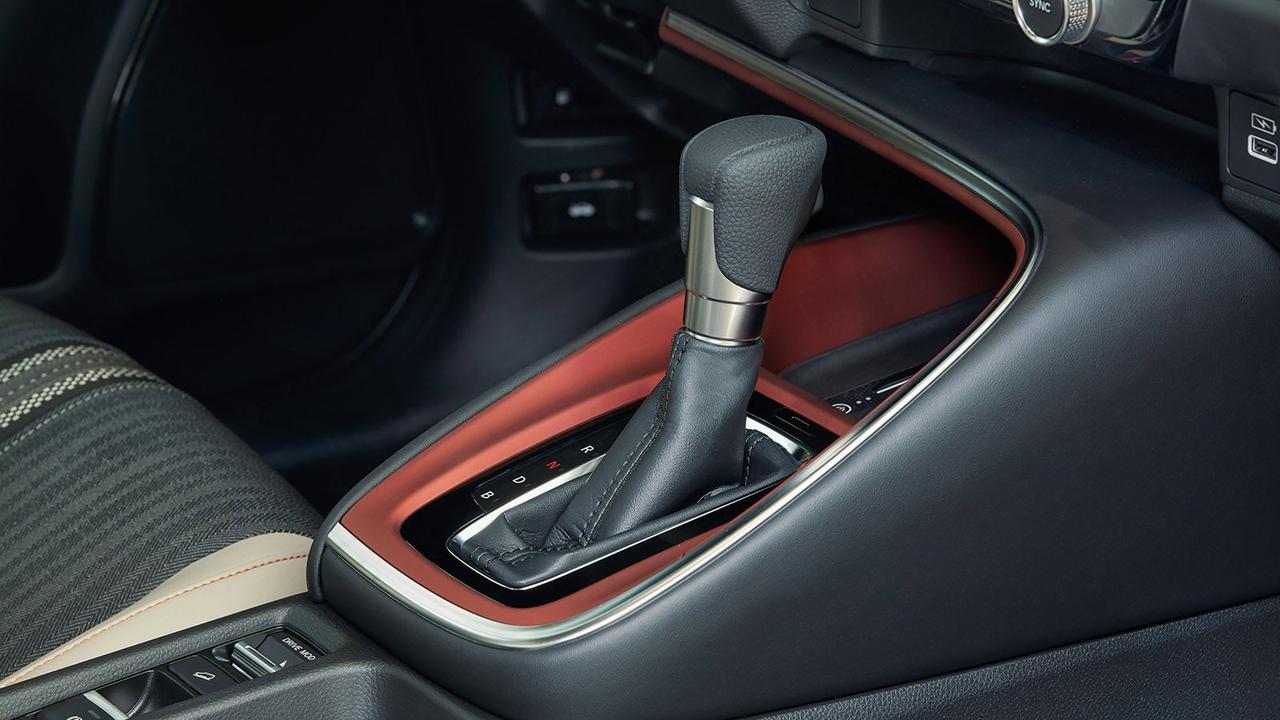
Despite the slightly frustrating blend of petrol and electric power, the overall setup is very smooth. There's no noticeable delay or break as the car swaps between fuel and electrons, and the brake pedal feel is linear and predictable as it jumps between regenerative braking and proper friction brakes. You can adjust the specific level of regen using the paddles behind the HR-V's steering wheel.
The claimed economy figure sits just north of 50mpg, and we reckon most drivers will be able to return comfortably more than 40mpg in the real world. Those numbers are great compared to most automatic petrol SUVs this size, but they're a little way behind the Toyota C-HR, which can get much closer to 50mpg.
Driving and comfort
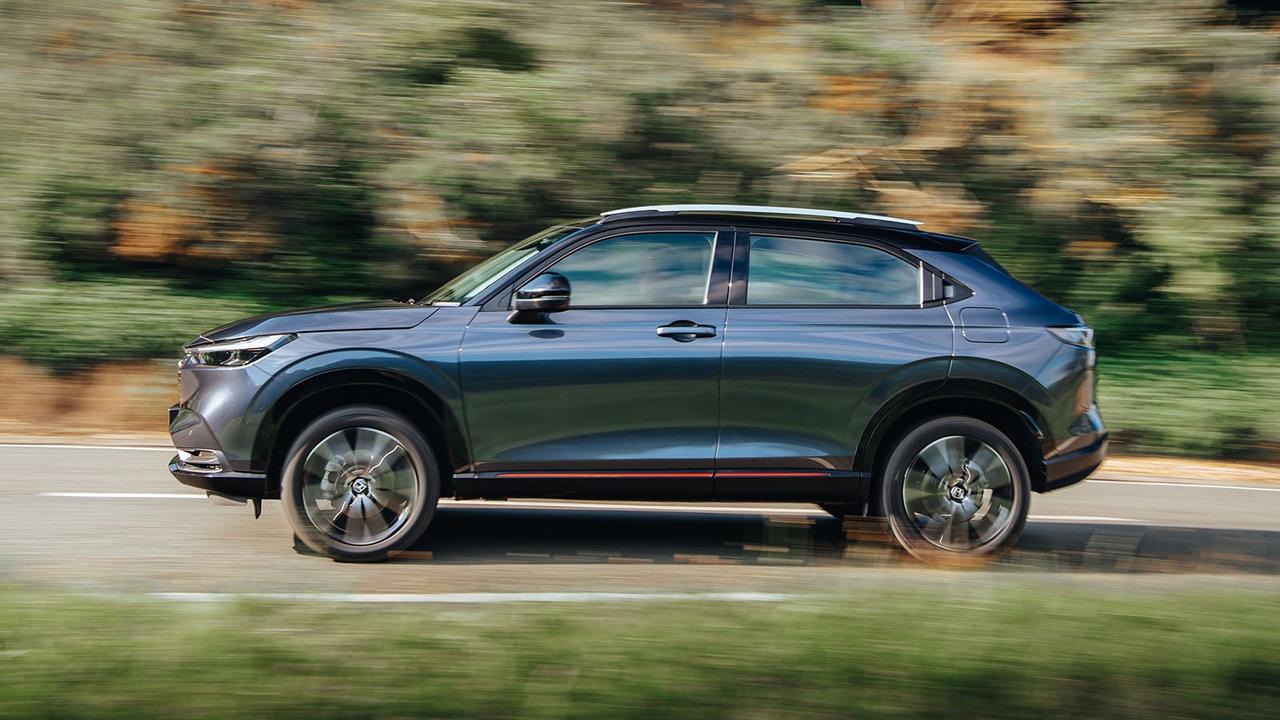
There's very few criticisms you could throw at the HR-V's driving experience that would matter to the average family SUV buyer. It's generally very easy and predictable, with accurate controls and excellent stability at speed and over uneven roads. Combined with the good visibility, the HR-V is a car that you very quickly feel comfortable driving.
If we're splitting hairs, it's not quite as fun as the Civic hatch. Throw the HR-V at a corner with some gusto and the car simply leans further and further from the apex, discouraging any kind of sporty driving. It's never wobbly or wayward feeling, but neither does it have the sense of athleticism present in Honda's smaller cars. You'll be having more fun behind the wheel of a Ford Puma or Mini Countryman.
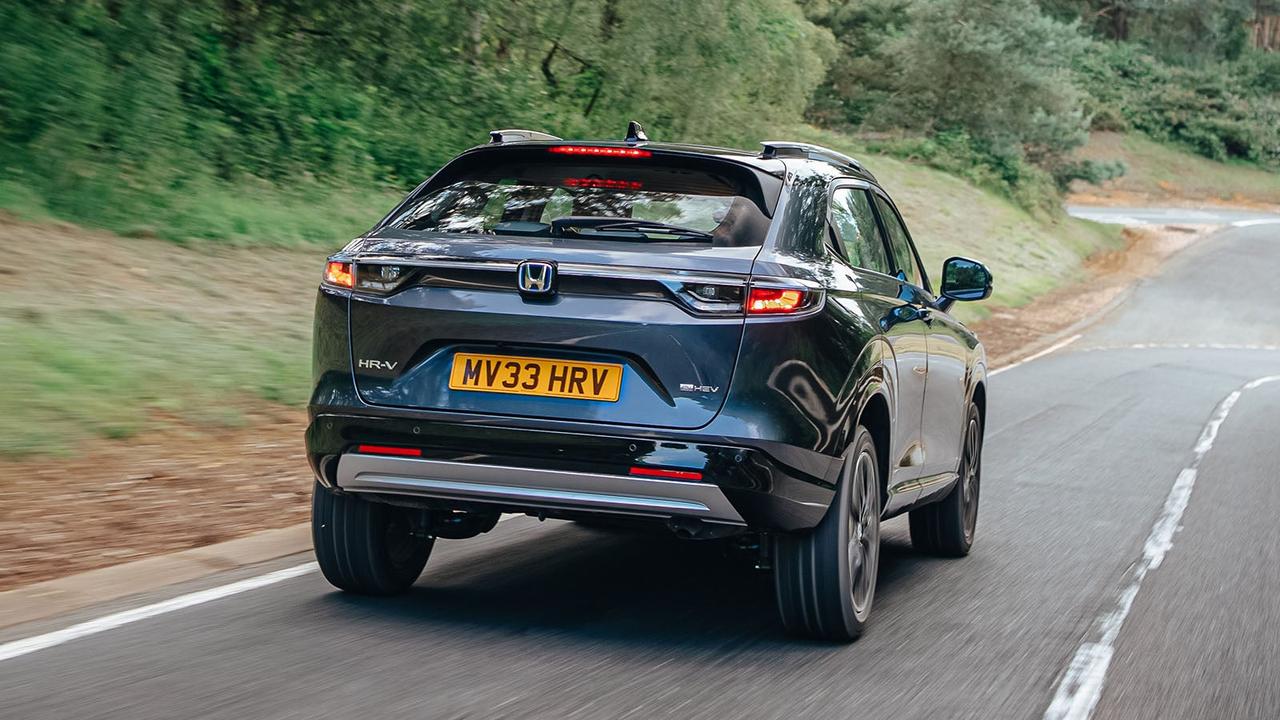
Since the HR-V hasn't quite nailed sporty driving, then you might at least hope that it's comfortable. Sadly, it doesn't quite pull this off either, with a ride that's just a touch too firm to truly feel cushioned. It's never harsh and the sense of body control you get in all scenarios is confidence-inspiring, but we could've taken a few more degrees of softness if we weren't going to get a sporty experience behind the wheel.
Refinement at speed is pretty good, with only a small amount of exterior tyre, suspension and wind noise bleeding into the cabin. You'll need to be light on the accelerator to keep things calm, however, as the engine will quickly start making a bit of a racket if you ask for too much throttle. Around town where the electric motor does most of the driving, the HR-V feels more hushed.
































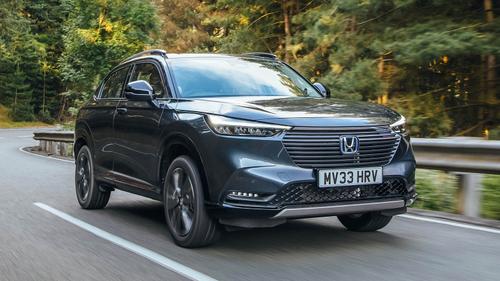

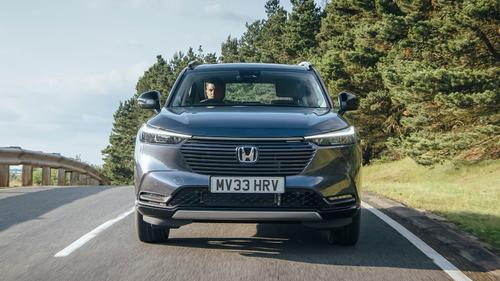
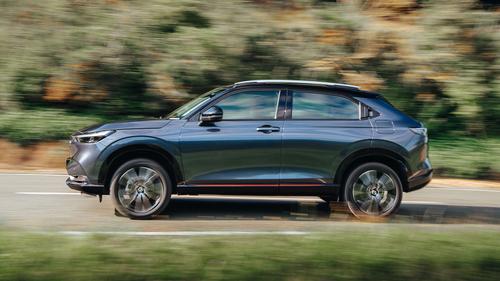
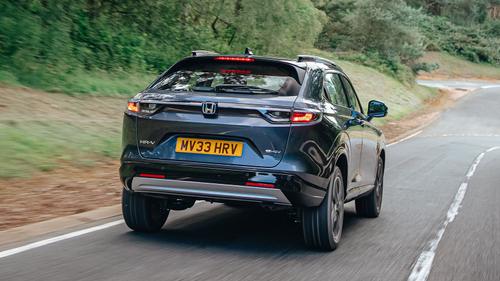
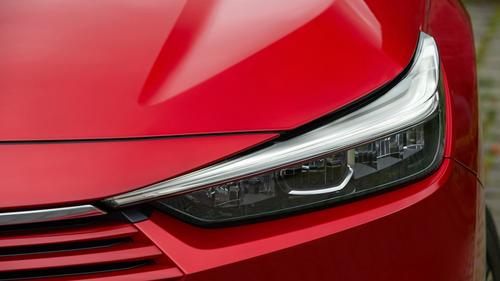
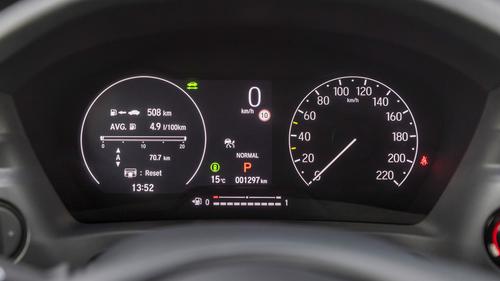
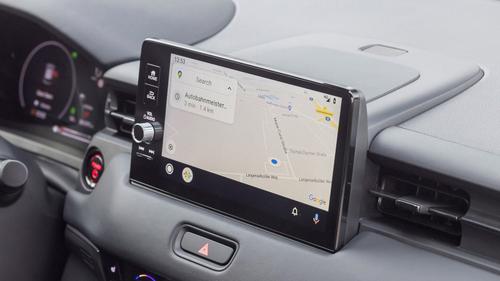
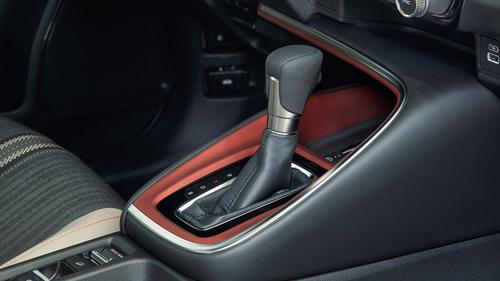
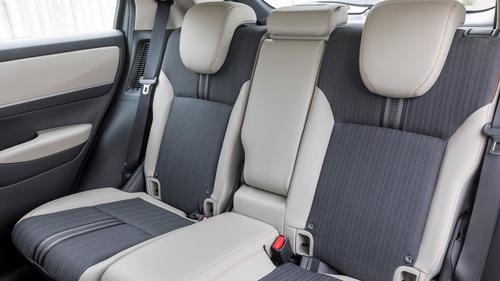
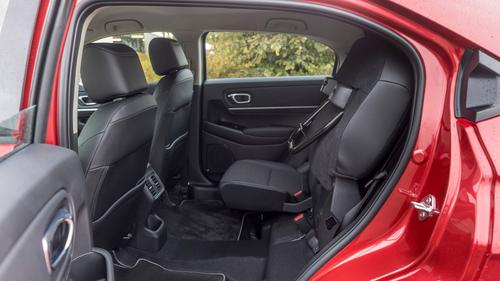
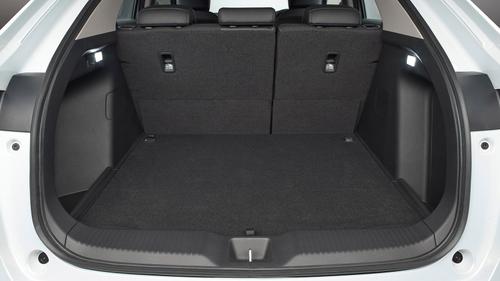



.jpg&w=1440&q=75)



